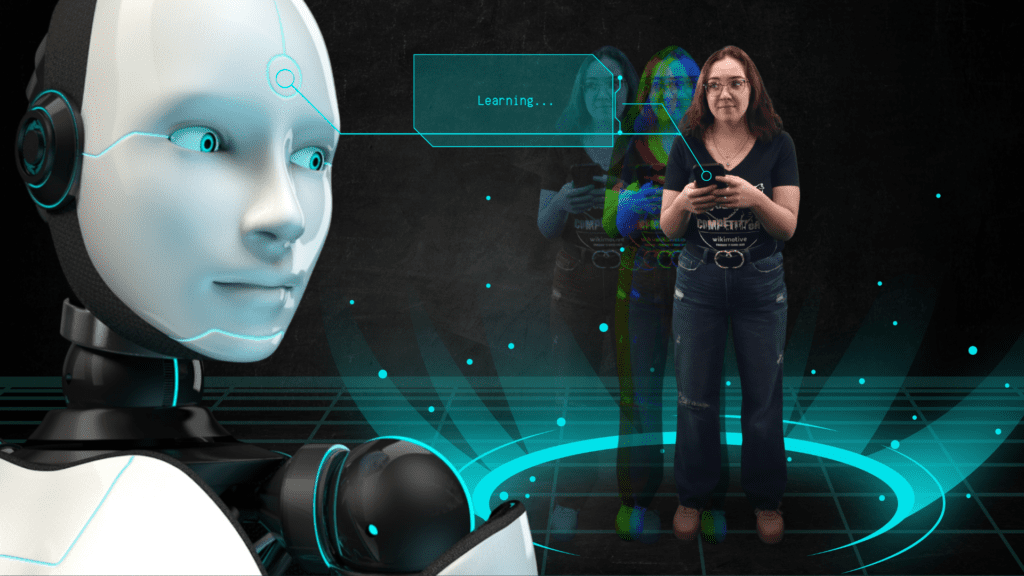
The internet has been hit by a storm these last few months. We have heard so much about artificial intelligence (AI), ChatGPT, and how “robots are taking over.” But, in all seriousness, you may be wondering what all of this actually means. For that reason, I will answer two of the biggest questions in this article: What is an artificial intelligence language model, and how exactly does one work? Let’s jump right in.
What is an AI Language Model?
The first thing most people want to know is what an AI language model is. Although it’s complex in terms of its creation, its actual existence is quite simple to understand. An AI language model is a computer program that generates (and understands) human language based on statistical techniques and machine learning. Its purpose is to replicate human interaction, which it does by analyzing the meaning of words and sentences in a user prompt and responding in a meaningful and appropriate way.
Not all AI language models are the same, though. There are various categories of AI models, with two of the most common being rule-based and machine learning. Rule-based models are more limited in their responses as they use predefined rules to respond to users. These models are given data sets and rules on how to use the information to analyze and generate text output, depending on the prompt. These are much easier to develop but are quite limited as they don’t have the ability to recognize language patterns and simply go by the data and rules given to them.
Machine learning models, on the other hand, are much more complex and, therefore, more powerful. This type of AI language model learns patterns and relationships through language. ChatGPT, the most commonly spoken about and used AI recently, uses machine learning, natural language processing, and deep learning to best reply to prompts from users. The added elements of natural language processing and deep learning allow ChatGPT to respond in a way that feels similar to human-to-human interaction, and if you’ve messed around with ChatGPT, you know that this was done pretty well.
Overall, AI is a pretty cool tool, though many people fear it. Of course, it’s easy to fear something when you don’t know the ins and outs of how it works. When you have a greater understanding of their underlying functionality, AI language models aren’t so scary after all.
How Do AI Language Models Work?
So, let’s talk about how these AI language models work. First, they take in and process large amounts of data, analyzing it to identify underlying patterns in the language. They then can use their complex algorithms to begin understanding the structure of sentences and how those relate to their meaning. With that information, they are able to generate text output, similar to human conversation, enabling them to go back and forth with a user. While it is complicated to actually create and train these models to function properly, the steps to their creation are quite easy to understand.
Steps to Creating an AI Language Model
#1 Data Collection and Preprocessing
When creating an AI language model, you must first have data to feed it. This could be anything from websites and social media posts to text documents and ready-made datasets. These pieces will give the model the information needed to respond to queries made by users. Once collected, the data needs to be preprocessed, though. This means removing unwanted characters, correcting spelling or grammatical errors, and even converting the text into a usable format for the language model. This step is all about preparing the model to be useful.
#2 Model Training
The model then needs to be trained. By examining and analyzing the preprocessed data and examples, the model will learn the relationships between words and how to respond powerfully and meaningfully.
#3 Text Generation
Now that the model is trained, it can be used to generate text output. By analyzing the prompt a user gives, the language model can understand what is being said or asked. From there, the model uses the data collected, preprocessed, and examined in training to find and best craft a meaningful response. So, while going back and forth with AI can feel oddly similar to having a conversation with a human being, these models are simply grabbing the knowledge they have learned and repurposing it to respond to your query.
Stay Tuned for More Information About AI
Artificial intelligence language models—computer programs that can analyze, understand, and generate human-like responses and conversations—are really quite interesting. With their ability to collect and process data, and the conversational text they can produce, AI models can also be quite useful for numerous things.
Over the next few weeks, we are going to take a deep dive into how these models can be useful, places in which they cannot be not so useful, and even how you can apply them to your SEO strategy. In a world with AI, humans are not being replaced, but humans not utilizing the AI tools at hand could be. At Wikimotive, we are unapologetically human but are absolutely not afraid to use the latest and greatest technologies to make our human touch even more powerful.
Stay tuned for more topics related to artificial intelligence, or contact us today to start a conversation. At the end of the day, we are here to continue helping you crush your competition.